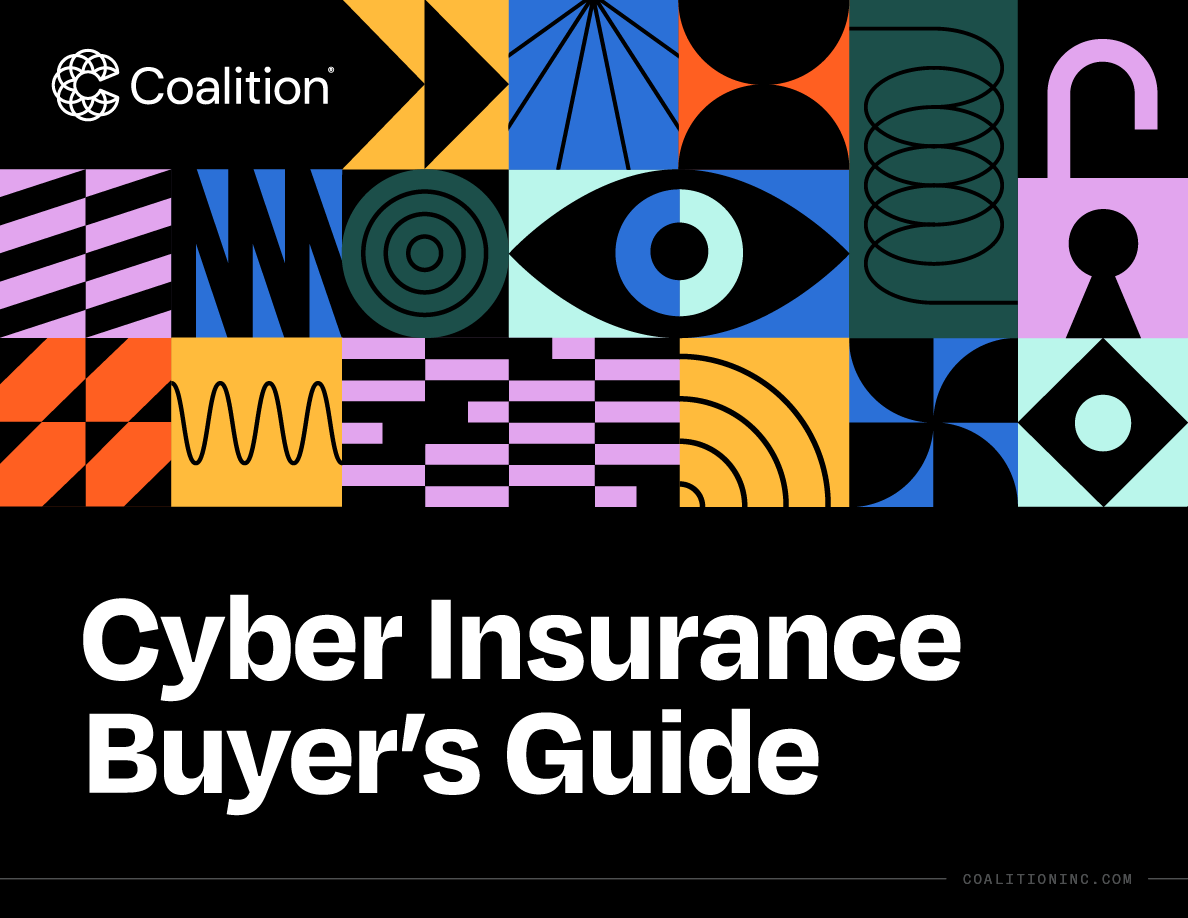Why cyber insurance is critical for financial services businesses
Financial services organizations are attractive targets for cybercriminals due to the vast amount of data they handle and the types of transactions they facilitate. Direct access to financial records, Social Security numbers, and other types of sensitive data puts the financial services industry at increased risk of experiencing a cyber attack.
Cyber risk for financial institutions can originate both internally and externally — from disgruntled employees and contractors who have access to sensitive information to threat actors executing sophisticated cyber attacks. These attacks can exploit vulnerabilities in software systems or use social engineering techniques to access and steal sensitive data, manipulate financial transactions, and even disrupt their clients’ business systems. All of this can result in significant financial loss, reputational damage, and legal consequences, which is why organizations in the financial services industry must recognize the importance of cyber insurance.
How bad could one small security incident be?

$146,000
Average cost of a cyber claim for financial services businesses

63%
Percentage of cyber attacks originating from email inbox

$470,000
Average ransomware loss for financial services organizations
Unique exposures for financial services organizations
How essential technologies can create cyber risk
Biometric authentication
Biometric authentication technologies, such as fingerprint or facial recognition, are often used for secure access to financial services. These technologies carry cyber risks related to spoofing attacks, where biometric data can be replicated or manipulated, bypassing authentication measures and gaining unauthorized access to accounts or transactions.
Cloud computing
Cloud computing allows financial institutions to store and process large amounts of data off-site, improving scalability, profitability, and efficiency. However, risks include unauthorized access to sensitive data, data breaches due to misconfigurations, and lack of control over security measures implemented by cloud service providers.
Data analytics and machine learning
Financial institutions use data analytics and machine learning algorithms to gain insights, detect patterns, and make automated decisions. Robotic Process Automation (RPA) technology, in particular, can automate repetitive financial tasks to improve speed and efficiency. However, the technology that makes this possible can be susceptible to data manipulation, model poisoning, and adversarial attacks, leading to inaccurate predictions, fraudulent activities, or biased decision-making.
High-frequency trading (HFT) systems
HFT systems enable financial firms to execute trades at high speeds using advanced algorithms. Cyber risks associated with HFT systems include distributed denial-of-service (DDoS) attacks on trading infrastructure, market manipulation, and algorithmic vulnerabilities leading to unintended or harmful trades.
Mobile banking platforms
Mobile banking enables users to access their accounts remotely and perform various transactions. While convenient, the technology can be vulnerable to phishing, malware, and data interception, potentially leading to unauthorized access, data theft, or financial fraud.
Payment gateways
This technology is used to securely transmit cardholder information between merchant websites and financial institutions. Online payment processing poses significant cyber risk, including payment card fraud, data breaches, and skimming attacks targeting card information during the payment process.
How sensitive data can increase business liability
Financial data
Collecting and processing financial information — bank accounts, credit cards, balances, transaction history, loan and credit application data, and even wire transfer details — requires adherence to industry standards. Mishandling or unauthorized disclosure of this data can cause direct harm to clients and trigger industry and regulatory investigations.
Geolocation data
Some financial institutions may use geolocation data to provide enhanced services and security to clients. Enhanced user experience and protections help attract and retain clients, but this data can be used to track individuals, commit identity theft, and other types of fraud if it falls into the wrong hands.
Know your customer (KYC) data
Financial institutions collect and store customer information for the purposes of establishing customer identity and determining their risk. Attackers may target this data through insider threats, third-party breaches, or social engineering attacks to perform identity theft, open fraudulent accounts, or enable other criminal activities.
Protected health information (PHI)
Many financial organizations have access to employee or client healthcare information. This may require these organizations to sign Business Associate Agreements that dictate compliance with the Health Insurance Portability & Accountability Act (HIPAA) Privacy Rule. Access to PHI data exposes financial institutions to additional cyber risks and possible fines and penalties if an actual or suspected data breach occurs.
For more insights, download our complete guide:
Business impacts for financial services businesses
What to expect after a cyber incident
Direct costs to respond
Responding to a cyber event typically requires numerous direct costs, also known as first-party expenses. If a financial services organization experiences a data breach involving PII, it will require a prompt response and the need for additional legal counsel, forensic investigation, victim remediation, and notification to comply with regulatory requirements. Simple investigations can cost tens of thousands of dollars, while more complex matters can increase costs exponentially. In extreme cases, organizations may consider negotiating with cybercriminals or paying ransom demands to recover encrypted or compromised data.
Liability to others
Navigating the patchwork of laws and regulations after a security incident or data breach is especially difficult for organizations that operate in a highly regulated industry across multiple legal jurisdictions. A data breach or security failure can trigger liability to third parties and cause bodily harm or injury, even if the management of financial records is outsourced and the organization is otherwise in compliance with applicable regulations.
Business interruption and reputation damage
A cyber event that impacts essential technology can have a significant impact on a financial institution's ability to operate and can be highly visible to clients and other stakeholders. Even short periods of disruption can lead to direct loss of revenue and inhibit an organization's ability to support customers, negatively impacting not only client retention but also the delivery of essential services.
Cybercrime
Beyond ransomware and data breaches, cyber events can result in financial theft for a financial institution or its customers — often without an actual breach. If an attacker dupes someone in the billing department to alter payment instructions, an organization can lose tens or hundreds of thousands of dollars almost instantly. Attackers can also gain access to email accounts and send fraudulent invoices or payment instructions to clients, vendors, and other third parties.
Recovery and restoration
After a cyber event, resuming operation is no easy task. If an attacker damages or destroys essential technology, data, or physical equipment, an organization may need to bring in external support or purchase new equipment to re-secure systems. Full remediation, restoration, and recovery can take a significant amount of time, when possible, and may require purchasing new software, systems, and consultants to rebuild the network

CYBER INSURANCE BUYER’S GUIDE
Choosing the right cyber coverage for your business
Cyber insurance is an essential aspect of modern risk management, offering coverage for the losses associated with data breaches, cyber extortion, business interruption, and other cyber-related incidents.
Coalition created a Cyber Insurance Buyer's Guide to help businesses navigate the complex cyber insurance market and confidently select the right coverage for their business.






